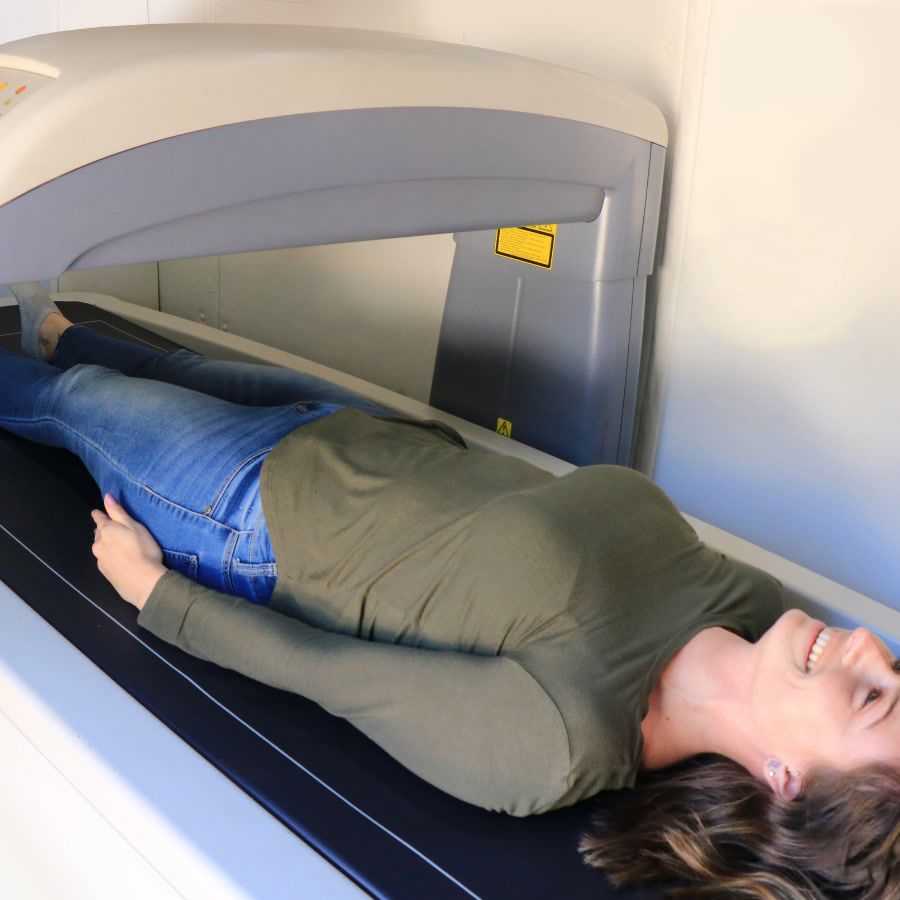Weight Loss Calculator by Date: Set a Date, Get Your Plan
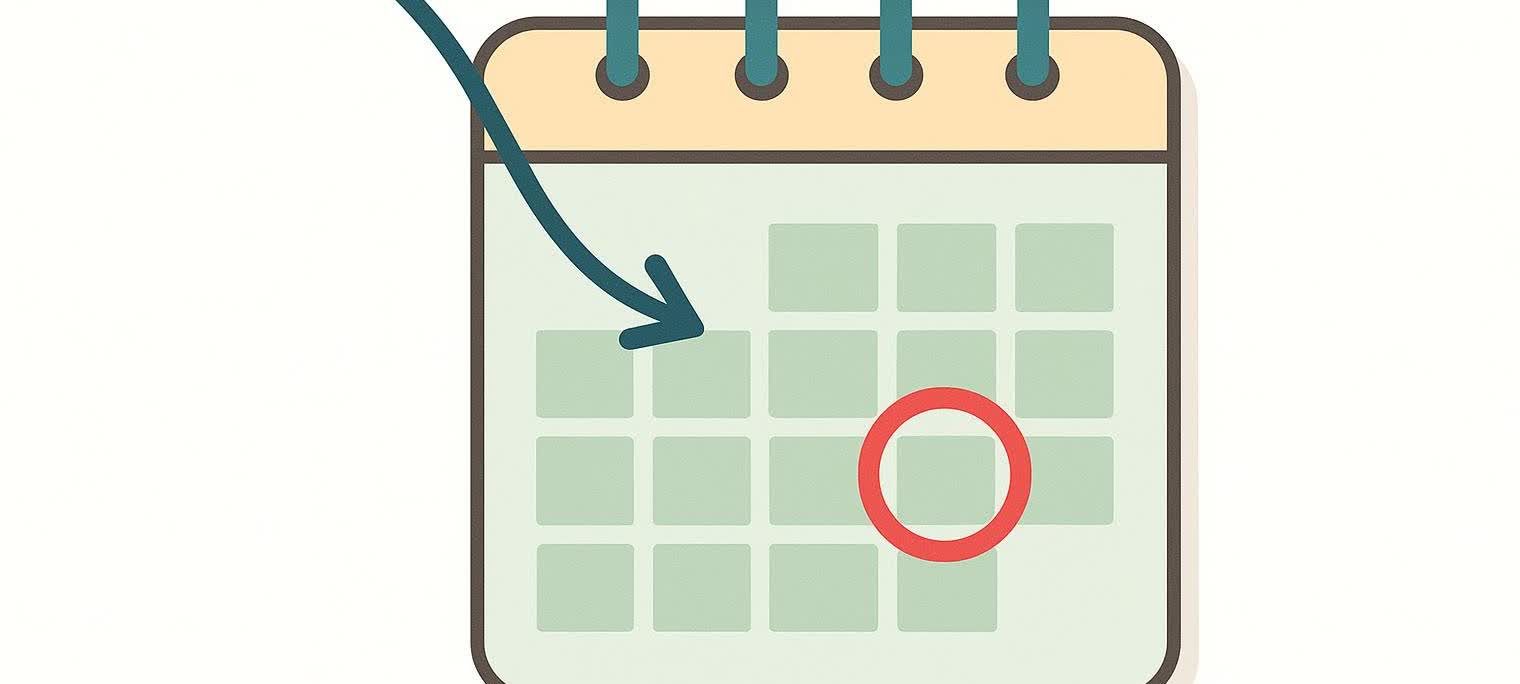
Weight Loss Calculator by Date: Set a Date, Get Your Plan
If you need to lose weight for a specific deadline, a weight loss calculator by date can be a powerful resource. These tools transform your goal from wishful thinking into a concrete daily action plan, providing a specific calorie target based on your current stats, goal weight, and timeline.
This comprehensive guide walks you through using date-based weight loss calculators effectively, interpreting your results, and turning those numbers into sustainable habits that actually work. You'll also discover when these tools excel—and when you might need a different approach.
What you'll learn:
- How to use an interactive weight loss calculator for deadline-driven goals
- The science behind safe, sustainable weight loss rates
- Advanced customization options for better accuracy
- How to create an actionable daily plan from your results
- When to adjust your timeline or approach
- Why professional tools like DEXA scans offer precision beyond online calculators
How Weight Loss Calculators by Date Work (3-Step Walk-Through)
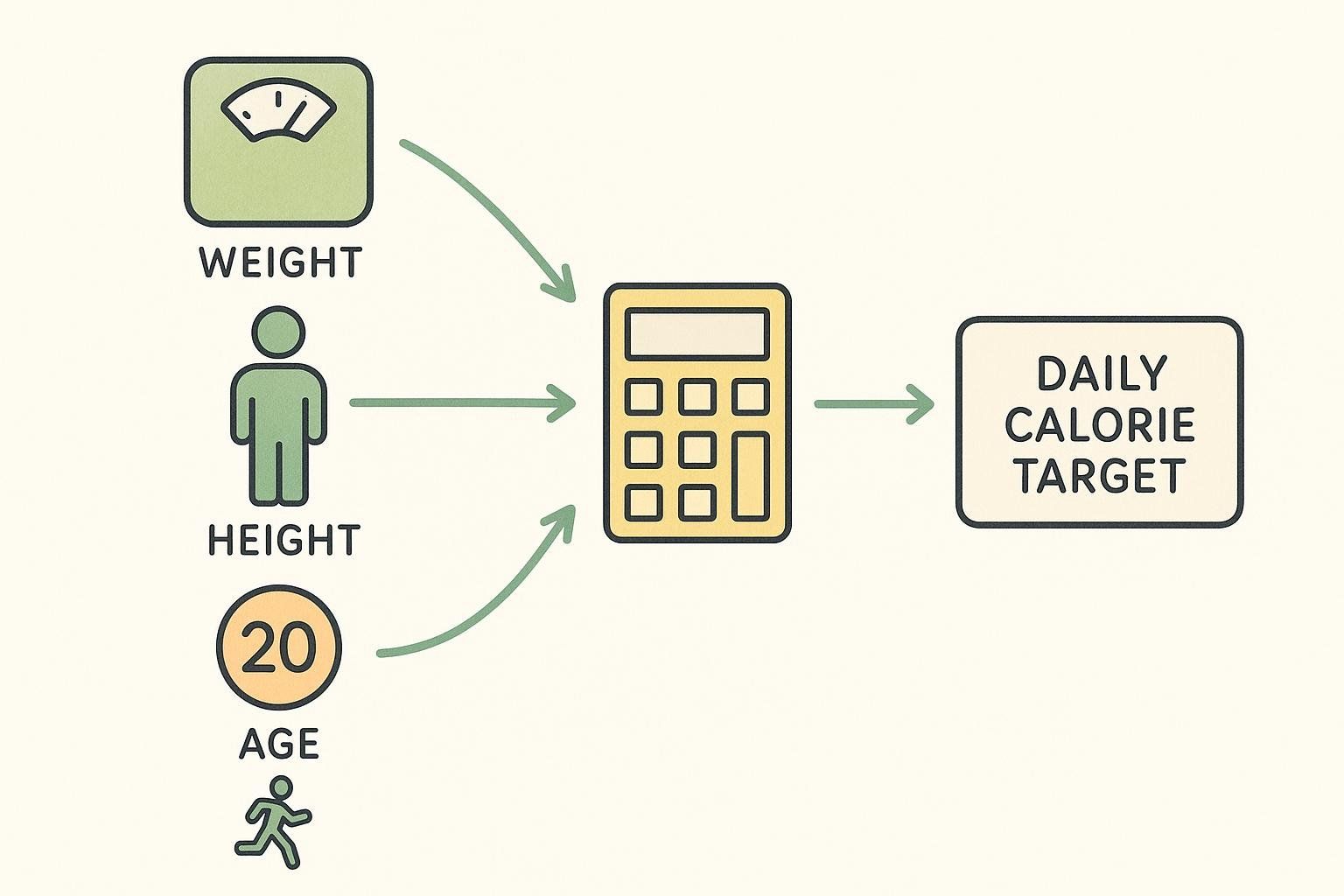
A weight loss calculator by date requires several key inputs to generate your personalized plan. Here's how to use it effectively:
1. Enter Your Details
Age, sex, height, weight, and activity level provide the baseline data the calculator needs to estimate your Basal Metabolic Rate (BMR). It runs the trusted Mifflin–St Jeor equation by default. If you already know your body-fat percentage, you can toggle to the Katch–McArdle formula for even greater precision.
2. Pick a Realistic Deadline
The tool checks whether your timeline demands losing more than 1–2 lb per week—if so, you'll get a red flag suggesting you extend the date. Quality calculators include built-in safety checks to ensure realistic timelines—if your goal date requires dangerously low calories or impossible weight loss rates, it'll alert you to adjust your expectations.
3. Review the Plan
Scroll to see your daily calories, macro grams, and an at-a-glance progress chart you can reference during your journey. The output typically displays your daily calorie target for weight loss, the projected weekly loss rate, and sometimes a timeline adjustment if your original date wasn't realistic.
Curious about how your metabolism shapes these numbers? See our BMR Calculator guide.
Understanding Your Calculator Results
When you use a weight loss calculator by date, you receive three critical pieces of information that form your roadmap to success. Here's how to interpret and use each one effectively:
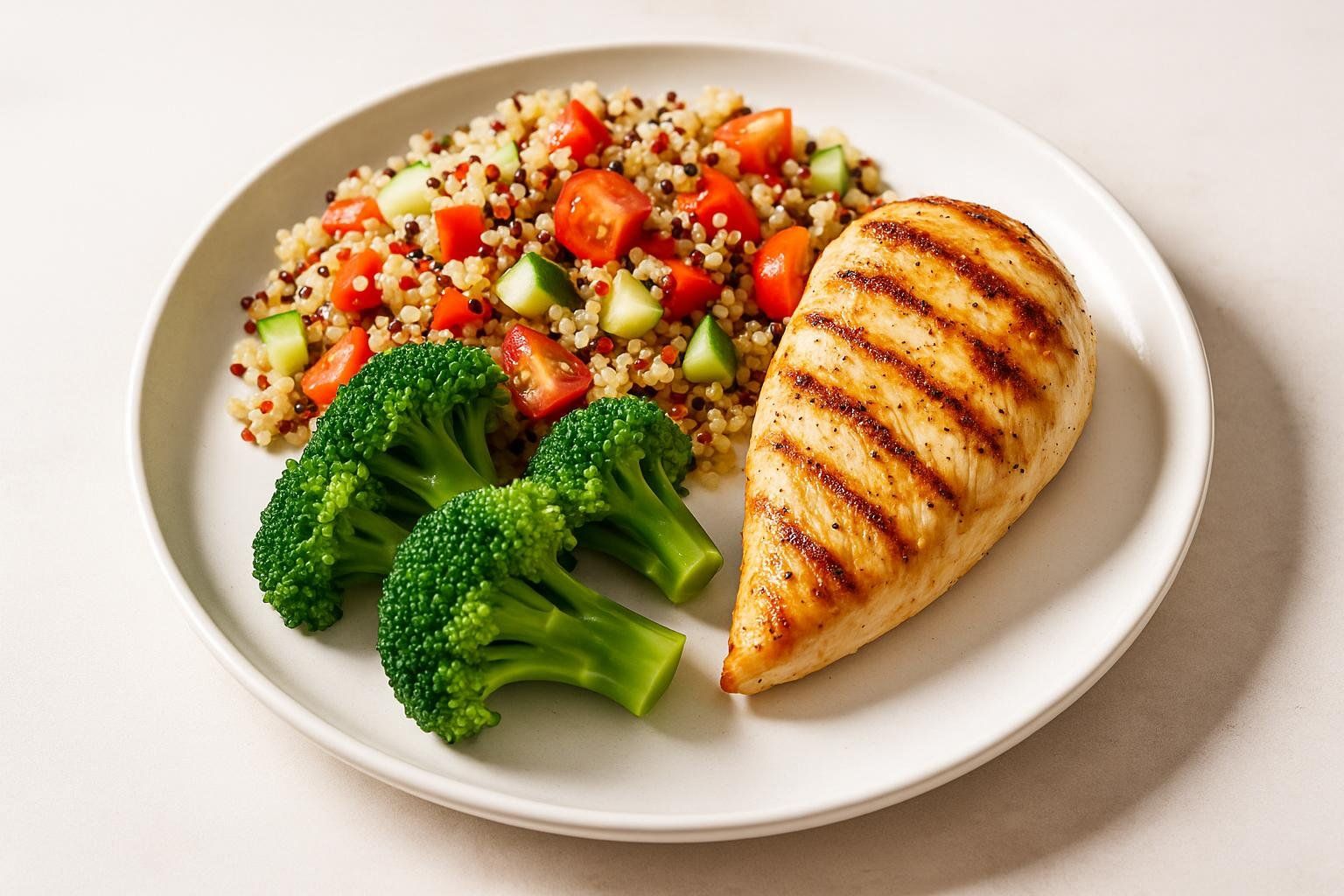
| Output | What It Means | Key Consideration |
|---|---|---|
| Daily Calories | How much you can eat each day to reach your goal by the deadline. | Staying near this number maintains the calculated energy deficit while still covering basic nutritional needs. |
| Macro Split | Suggested daily share of calories from protein, carbs, and fat, converted into gram targets under your calorie goal. | Ratios can be fine-tuned; strength athletes often shift toward a slightly higher protein percentage. |
| Weekly Pace | Average pounds per week the plan expects you to lose. | Keeps you within the broadly accepted safe range of 0.5–2 lb per week. |
| Timeline | Visual checkpoint dates along your journey. | Use these milestones to reassess progress and celebrate wins. |
Daily Calorie Goal: Your Daily Target
This number represents how many calories you should consume each day to reach your goal weight by your target date. The calculator determines this by:
- Estimating your Total Daily Energy Expenditure (TDEE)
- Subtracting the necessary calorie deficit for weight loss
- Ensuring the result stays within safe minimum thresholds
For most people, this target falls between 1,200-1,800 calories daily, depending on size, activity level, and goals. Remember: this is your total daily intake, not just meals—it includes snacks, beverages, and any cooking oils or condiments.
Estimated Timeline: Reality Check Your Expectations
Even when you enter a specific target date, quality calculators will show you a realistic timeline based on safe weight loss rates. If your original goal was overly aggressive, you'll see an adjusted timeline that prioritizes your health over speed.
This estimated timeline assumes:
- Consistent adherence to your calorie target
- Stable activity levels
- Normal metabolic response to calorie restriction
Use this timeline to set realistic expectations and avoid disappointment if progress seems slower than hoped.
Weekly Loss Rate: Your Progress Benchmark
This shows how much weight you should lose per week on average. Sustainable rates typically fall between 0.5-2 pounds weekly, with 1-1.5 pounds being the sweet spot for most people.
Weekly rates faster than 2 pounds often indicate:
- Unrealistic calorie restrictions
- High risk of muscle loss
- Potential metabolic slowdown
- Difficulty maintaining long-term
If your calculator suggests faster loss, consider extending your timeline for better sustainability.
Understanding Safe vs. Unsafe Results
Well-designed calculators are programmed with safety guardrails. They typically won't recommend:
- Daily calories below 1,200 for women or 1,500 for men
- Weight loss faster than 2 pounds per week
- Calorie deficits larger than 1,000 calories daily
If your calculator suggests an "impossible" timeline, it's protecting your health. Research shows that sustainable weight loss occurs at 1-2 pounds per week, according to the National Institute of Diabetes and Digestive and Kidney Diseases (NIDDK).
Re-run the calculator whenever you drop roughly 5% of your starting weight so your plan stays accurate as your body changes.
The Science Behind Date-Based Weight Loss
The Energy Balance Equation

Weight loss fundamentally comes down to creating an energy deficit: consuming fewer calories than you burn. The classic rule states that a 3,500-calorie deficit equals one pound of fat loss.
However, research shows this relationship isn't perfectly linear. Your body adapts to calorie restriction by slightly reducing metabolism and increasing hunger hormones, which means the effectiveness of your calorie deficit decreases over time.
Why BMR and TDEE Matter
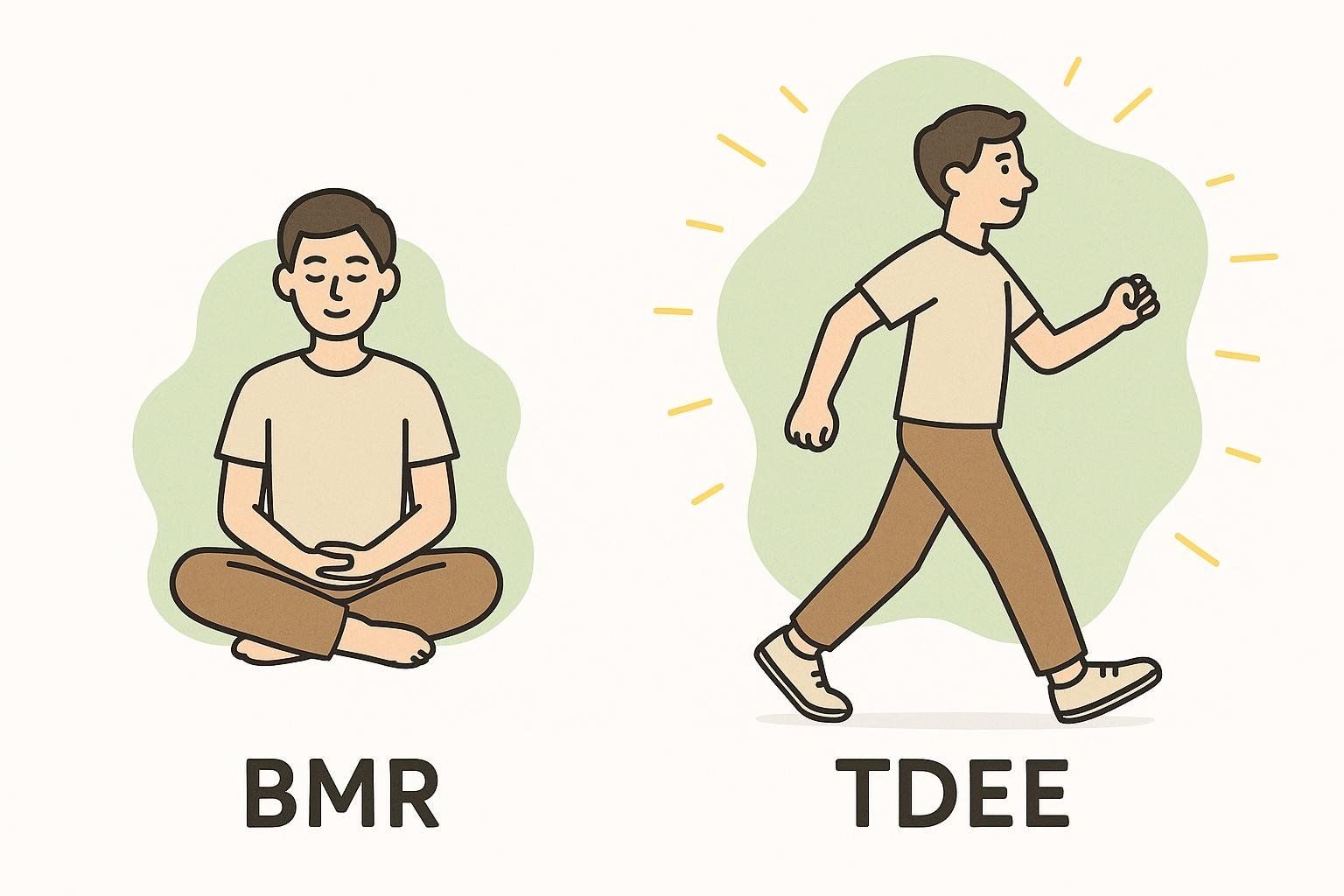
Quality weight loss calculators use established formulas to estimate your metabolic needs:
Basal Metabolic Rate (BMR): Calories needed for basic bodily functions
- Mifflin-St Jeor Equation (most accurate for general population)
- Harris-Benedict Equation (classic formula)
- Katch-McArdle Equation (uses lean body mass)
Total Daily Energy Expenditure (TDEE): BMR plus activity calories
The calculator multiplies your BMR by an activity factor:
- Sedentary (1.2) - Desk job, minimal exercise
- Lightly active (1.375) - Light exercise 1-3 days/week
- Moderately active (1.55) - Moderate exercise 3-5 days/week
- Very active (1.725) - Hard exercise 6-7 days/week
- Extremely active (1.9) - Very hard exercise, physical job
Learn more about BMR calculations in our comprehensive BMR Calculator guide.
The Metabolic Adaptation Reality
As you lose weight, your calorie needs decrease for two reasons:
- Smaller body size requires fewer calories to maintain
- Metabolic adaptation - your body becomes more efficient
This is why you'll need to periodically recalculate your numbers. What starts as a 500-calorie deficit might become only 300 calories as your body adapts, requiring you to adjust your calorie targets downward to maintain the same rate of progress.
Advanced Features & Customization Options
Choosing the Right Formula
Different populations benefit from different BMR equations:
| Population | Recommended Formula | Why |
|---|---|---|
| General adults | Mifflin-St Jeor | Most accurate across diverse populations |
| Athletes with known body fat | Katch-McArdle | Uses lean mass for precision |
| Older adults | Harris-Benedict (Revised) | Better accounts for age-related changes |
Activity Level Precision
Rather than guessing your activity level, consider these specifics:
Sedentary: Office work, driving, reading, typing
Lightly Active: Desk job + 30 min walking 3x/week
Moderately Active: Desk job + 45-60 min exercise 3-5x/week
Very Active: Daily exercise or sports 6-7x/week
Extremely Active: 2+ hours daily exercise + physical job
Personalize Your Plan
Even within the calculator's core outputs, you can fine-tune your approach:
- Activity-Level Adjustment – Be honest. "Moderately active" means 3–5 days of purposeful exercise per week.
- Body-Fat-Based Formula – If you know your body-fat percentage, switch to the Katch–McArdle option for calories tailored to your lean mass.
Want lab-grade accuracy? Pair your numbers with a DEXA body composition scan to measure lean mass precisely.
Body Composition Considerations
Standard calculators estimate based on total body weight, but muscle tissue burns more calories than fat tissue. Individual metabolic needs can vary significantly based on body composition—those with higher muscle mass typically require more calories, while those with lower muscle mass may need fewer calories than standard formulas predict.
For the most accurate metabolic assessment, consider a DEXA body composition scan to measure lean mass precisely.
GLP-1 Medications and Weight Loss Calculators
How GLP-1s Change Your Calorie Math
Glucagon-like peptide-1 (GLP-1) medications like Ozempic, Wegovy, Mounjaro, and Zepbound are transforming weight loss by mimicking natural hormones that reduce appetite and slow stomach emptying. If you're taking these medications, your relationship with food—and calorie calculators—changes significantly.
How GLP-1s Affect Calculator Accuracy
Standard weight loss calculators may overestimate your calorie needs when on GLP-1 medications because:
- Reduced appetite means you naturally eat less than predicted
- Slower gastric emptying affects when and how much you can eat
- Enhanced satiety signals make smaller portions feel satisfying
According to recent expert guidelines compiled by obesity research organizations, people on these medications typically consume 1,200 calories per day (women) and 1,500-1,800 calories per day (men)—often less than traditional calculators suggest for weight loss.
Special Considerations for GLP-1 Users
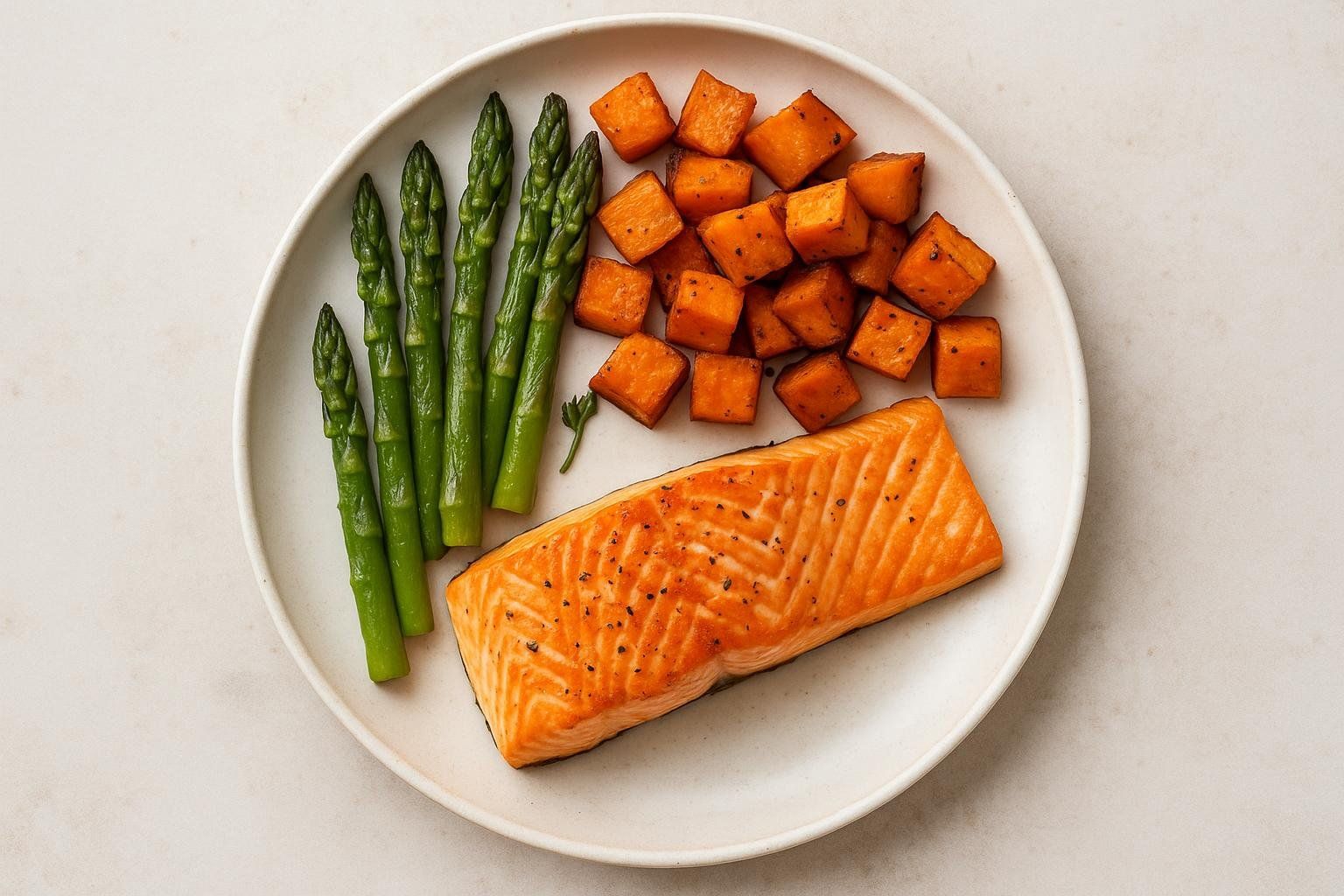
Nutritional Quality Becomes Critical: With reduced food intake, every calorie must count. These guidelines also emphasize:
- Prioritize protein (70-75g minimum daily) to prevent muscle loss
- Focus on nutrient-dense foods to meet vitamin and mineral needs
- Eat smaller, frequent meals (5-6 times daily) to manage side effects
- Limit simple carbohydrates and sugars that provide empty calories
Monitoring Requirements: Regular tracking becomes even more important to ensure adequate nutrition despite reduced intake.
Calculator Adjustments for GLP-1 Users
If you're on GLP-1 medication:
- Use calculator results as starting points, not rigid targets
- Monitor actual intake rather than forcing predetermined calorie goals
- Focus on minimum nutrition thresholds rather than calorie maximums
- Track energy levels and muscle mass as key progress indicators
For more context, see our GLP-1 weight-loss plateau guide.
Example Scenarios: Putting the Plan into Practice
See how the plan works in practice with these three examples. Remember that your results will be unique to your data.
Goal-Setter Greg
- Inputs: 200 lb, 5'10", 35-year-old male, moderately active; goal = 185 lb by 12 weeks.
- Calculator Output: 2,240 cal/day (168 g protein / 224 g carbs / 75 g fat) at ≈1.2 lb/week.
- Strategy: Follow the calorie target, strength-train three days per week, and schedule a halfway DEXA scan to verify fat loss.
Health-Conscious Hannah
- Inputs: 165 lb, 5'6", 30-year-old female, lightly active; goal = 157 lb by 16 weeks.
- Calculator Output: 1,792 cal/day (134 g protein / 179 g carbs / 60 g fat) at ≈0.5 lb/week.
- Strategy: Use the macro guide to build balanced meals, following her doctor's advice on nutrition for blood-sugar management and aiming to improve her A1C.
Fitness Enthusiast Frank
- Inputs: 185 lb, 5'11", 28-year-old male, very active, 19% body fat; body-fat formula selected; goal = 175 lb by 10 weeks.
- Calculator Output: 2,671 cal/day (200 g protein / 267 g carbs / 89 g fat) at ≈1 lb/week.
- Strategy: Combine the targets with heavy lifting and book a midpoint DEXA to confirm muscle retention.
Creating Your Action Plan
From Numbers to Daily Habits
Your calculator gives you a calorie target—now you need to hit it consistently. Here's how to translate numbers into sustainable practices:
Structuring Your Daily Intake
Research shows that starting your day with adequate protein can improve appetite control and satiety throughout the day, making it easier to stick to your calorie targets. Consider incorporating foods like Greek yogurt, eggs, cottage cheese, or protein shakes into your morning routine for an effective start.
Extending this principle throughout the day is key. Here's what that could look like for a 1,500 calorie target:
Sample Nutritional Targets (1,500 calorie target):

- Breakfast: 400 calories, 25g protein
- Lunch: 450 calories, 30g protein
- Dinner: 500 calories, 35g protein
- Snacks: 150 calories, 10g protein
Tracking Your Progress
Daily Measurements:
- Weight (same time, same conditions)
- Food intake (use apps like MyFitnessPal or Cronometer)
- Exercise/activity
Weekly Assessments:
- Average weight change
- Energy levels
- Hunger/satisfaction
- Adherence to calorie targets
Monthly Deep Dives:
- Body measurements
- Progress photos
- Goal timeline reassessment
For comprehensive progress tracking, explore our Ultimate Weight-Loss Tools Guide which covers the best apps, devices, and measurement strategies.
Troubleshooting Common Challenges
When Progress Stalls
Plateau Breakers:
- Recalculate your numbers - Your calorie needs decrease as you lose weight
- Increase activity - Add 10-15 minutes to workouts or daily walks
- Reassess portions - Food logging accuracy often drifts over time
- Consider a diet break - 1-2 weeks at maintenance can reset hormones
What to Do If Your Timeline Is Unrealistic
Many people input aggressive deadlines that require unsafe practices. If your calculator suggests extremely low calories:
Option 1: Extend your timeline to allow 1-2 pounds per week loss
Option 2: Accept partial progress toward your goal by the target date
Option 3: Reframe your goal: Shift your focus from scale weight to improving body composition—this approach prioritizes fat loss while preserving muscle, leading to better long-term results and improved appearance even if the scale doesn't show your exact goal number. Tools like DEXA scans can track these meaningful changes that regular scales miss entirely.
Metabolic Adaptation Signs
Watch for these indicators that your metabolism has slowed:
- Extreme fatigue despite adequate sleep
- Feeling cold frequently
- Loss of strength in workouts
- Mood changes or irritability
- Weight loss stops despite consistent adherence
Solution: Consider a temporary increase to maintenance calories for 1-2 weeks.
When to Reassess Your Plan
Monthly Check-In Protocol
Monthly Assessment Questions:
- Are you losing 1-2 pounds per week on average?
- Do you feel energized during workouts?
- Is the plan sustainable with your lifestyle?
- Are you maintaining muscle mass? (consider DEXA scan)
Adjusting Your Approach
If you're losing faster than 2 lbs/week: Increase calories by 100-200 daily
If weight loss has stalled 2+ weeks: Reduce calories by 100-150 daily OR increase activity
If you're losing muscle: Increase protein intake and add resistance training
Red Flag Scenarios
Stop and reassess if you experience:
- Persistent fatigue or weakness
- Hair loss or brittle nails
- Irregular menstrual cycles (women)
- Frequent illness
- Obsessive thoughts about food
These may indicate your approach is too aggressive and needs professional guidance.
Beyond the Calculator: Supporting Tools
Professional Assessments
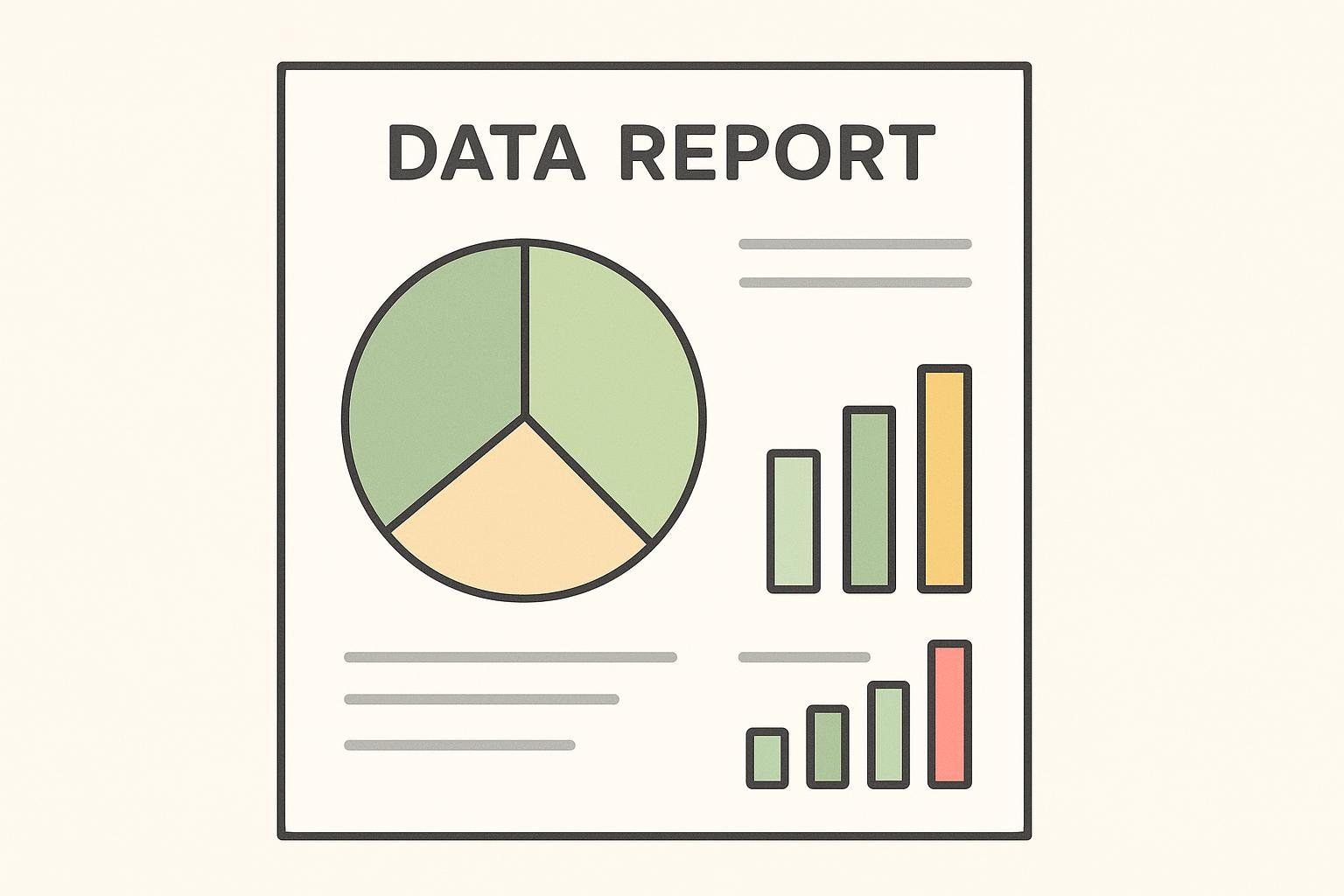
While calculators provide estimates, clinical tools offer precision:
DEXA Body Composition Scan: Measures fat, muscle, and bone density with ±1% accuracy. Unlike calculator estimates, DEXA reveals exactly how much lean mass you have for metabolism calculations.
Resting Metabolic Rate (RMR) Testing: Measures your actual calorie burn at rest through breath analysis—much more accurate than equation-based estimates.
Technology Integration
Smart Scales: Automatically sync weight data to reduce logging friction
Fitness Trackers: Refine calorie burn estimates with heart rate data
Meal Tracking Apps: Simplify portion control with barcode scanning
When Professional Help Makes Sense
Consider working with professionals if you:
- Have 50+ pounds to lose
- Have medical conditions affecting metabolism
- Have a history of eating disorders
- Are preparing for a major life event (surgery, athletic competition)
- Experience persistent plateaus despite proper calculator use
Frequently Asked Questions
How often should I recalculate? Update your numbers whenever your weight drops by about 5%—or at least once a month—so calorie and macro targets stay in line with your evolving body and metabolism.
Can I eat less than the suggested calories for faster results? We strongly advise against it. Dropping too low increases the risk of muscle loss, nutrient deficiencies, and rebound weight gain. The calculator's minimum-calorie safeguards are designed to keep you out of that danger zone.
Does the tool work if I'm on Ozempic or other GLP-1 meds? Always consult your prescriber before using any calculator to set dietary targets while on GLP-1 medication. With your provider's guidance, the tool can help structure a balanced plan. For more context, see our GLP-1 weight-loss plateau guide.
Why do calories change when I lose weight? Smaller bodies burn fewer calories at rest. The calculator adjusts your targets downward to match your new metabolic rate, ensuring you continue to lose weight steadily.
How accurate are weight loss calculators by date? Calculator reliability depends on the quality of your inputs and individual metabolic factors. Most use validated formulas like Mifflin-St Jeor, which are widely considered dependable estimates for the general population. However, factors like body composition, genetics, and metabolic history can affect individual results. For the most precise approach, use the calculator's results as your starting point and refine your plan with detailed body composition data from a DEXA scan.
Can I lose weight faster than the calculator suggests? While it's possible to lose weight faster through extreme measures, calculators typically recommend safe rates (1-2 lbs/week) to preserve muscle mass and metabolic health. Faster loss often means losing more muscle, which reduces long-term success.
What if my target date is unrealistic? Most reputable calculators will indicate when a timeline requires unsafe practices (extremely low calories). It's better to extend your timeline than risk metabolic damage or muscle loss. Focus on building sustainable habits rather than meeting arbitrary deadlines.
Why do different calculators give me different results? Calculators may use different BMR formulas, activity multipliers, or safety limits. For consistency, stick with one reliable calculator and focus on the trends rather than comparing across multiple tools.
Should I eat below my BMR? Eating below BMR is not recommended because it fails to provide enough energy for your body's most basic needs. BMR represents the calories required for essential functions like breathing, circulation, and organ function. Consuming fewer calories can lead to muscle loss, nutrient deficiencies, and impaired metabolic function.
Next Steps: From Numbers to Action
- Record your daily calorie and macro targets. Post them where you'll see them—on the fridge or in your tracking app.
- Schedule a BodySpec DEXA scan at the start and midway points to confirm weight loss is coming from fat, not muscle.
- Set calendar reminders for the timeline checkpoints.
- Celebrate non-scale wins—improved energy, better sleep, looser clothes.
Important Medical Disclaimer
⚠️ Medical Disclaimer: The information provided about GLP-1 medications is for educational purposes only and is not intended as medical advice. GLP-1 medications like Ozempic, Wegovy, Mounjaro, and Zepbound are prescription drugs that require medical supervision.
Always consult your healthcare provider before:
- Starting or stopping any weight loss medication
- Making significant changes to your diet while on medication
- Using weight loss calculators to set calorie targets while on GLP-1s
- Adjusting medication dosages or timing
Your doctor or registered dietitian should provide personalized guidance on:
- Appropriate calorie targets for your specific medication and health status
- Managing side effects and nutritional needs
- Monitoring progress and making adjustments
- Determining when calculator results may not apply to your situation
The calculator and content on this page are for educational purposes only and are not a substitute for professional medical advice. Always consult a qualified healthcare provider before making significant changes to your diet, exercise, or medication regimen.
Take the Next Step: Precision Beyond Estimates
A weight loss calculator by date gives you a roadmap, but your body's unique composition affects how accurate that map really is. Two people with identical height, weight, and age can have dramatically different metabolic needs based on muscle mass, bone density, and fat distribution.
Want to move beyond estimates?
BodySpec's DEXA scan reveals your exact muscle mass for precision BMR calculations, plus tracks visceral fat changes that standard scales miss entirely.
Book a BodySpec scan today and transform guesswork into data-driven results. Your deadline deserves a plan built on facts, not formulas.

